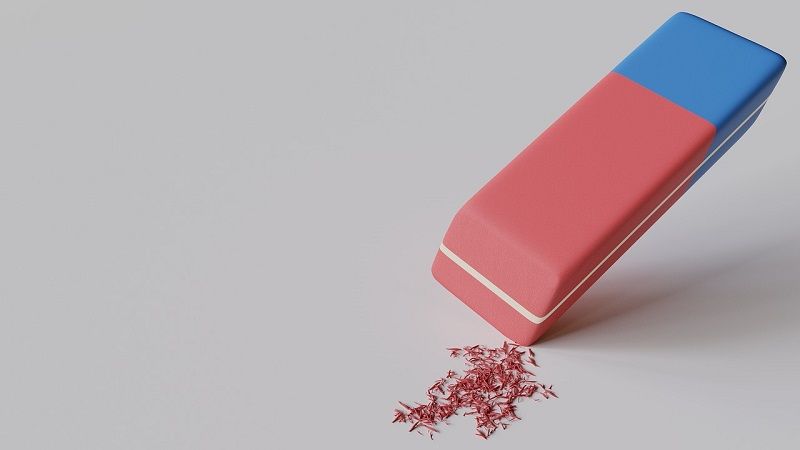All of us would like to believe in romantic love stories with happy endings. Unfortunately, sometimes when trying to find a fairytale partner you come across someone inappropriate who tries to hurt and humiliate you after a breakup by using photos you have sent them privately. There are a few names of this misuse of intimate photos: revenge porn, nonconsensual pornography, image abuse, sextortion, online harassment, cyberstalking, or cyberbullying. But whatever name we choose to describe it, it is all about posting private images without the consent of the person who is in the photo. If you are a victim of this crime, you can use the PimEyes face recognition search engine to discover where your ex-partner has published your pictures.
How it works
PimEyes is an online face tracker - using it you can find where a particular face appears on the Internet. When you upload your photo to the search bar, we measure some parts of your face, then compare them with the photos posted on the Internet and display all the matching ones as search results. It is important to emphasize that our search results are website addresses on which a specific face appears, not personal data.
PimEyes is based on modern technologies: reverse image search, facial recognition technology, and machine learning. The combination of those technologies allows you not only to find the same picture posted online but also to track down the same face in different photos.
Check where your face appears online
What is PimEyes’ database?
Our database is a list of publicly available websites that contain pictures with faces. All of these websites are publicly available, like the news, media, blogs, company websites, etc. We don’t search social media or video platforms, including public profiles (e.g. of companies, influencers, brands). It is important to mention that we don’t collect or store photos of people’s faces.

I want to find where revenge porn with myself has been published. How can I do that?
In our basic Open Plus plan, you receive access to all the search results. You can check the addresses of websites on which your face appears, as well as links to source images (these links are very helpful if you decide to remove photos from the source websites by yourself). Open Plus subscribers can also set up to 3 PimEyes’ Alerts - automatic notifications about newly-found results with a particular face. Read more about monitoring your image with Alerts in this article on our blog.
PROtect plan to protect your privacy
In our offer, there is a plan designed to guard your privacy. It is called PROtect.
It contains all of the features in the Open Plus plan but is also extended to include 2 complementary services:
- the PROtect image (the option to hide the results with your face from being displayed in PimEyes’ searches)
- PROtect Takedown Requests (the option to order the removal of photos from external websites). In the PROtect Takedown Requests service we send DMCA and GDPR Takedown Notices on your behalf to admins of websites that host your pictures.
The PROtect plan is dedicated to people who want professionals to take care of their online image. On behalf of subscribers, we find websites that are using their image illegally, and administrators of these websites, draft and send takedown notices and, finally, monitor if the unwanted photos have been removed.
In the PROtect plan you can set up to 15 alerts, not only 3.
If you have started with the Open Plus plan, but you feel that you need better protection, you can easily upgrade your subscription to PROtect in the user’s panel.

Removing revenge porn photos
Removing any photo from an external website requires contacting the website administrator and requesting the removal of your picture. Usually you need to specify where a particular image can be found and invoke your rights, which have been violated by this photo. Websites administrators often require additional data like either the scan of an ID card or passport or information about the source of the photo.
Unfortunately, this process only seems to be easy to execute. In reality, removing a photo from an external website is usually unpleasant, takes time, and causes a lot of stress. The problems often start at the very beginning with not being able to find a contact address to the web administrator. At every step of this process, there are bumps and unforeseen obstacles. They are outlined on our blog in this article about leaked photos, where you also find practical tips on how to overcome those adversities there.
Do you want us to take care of removing your photos from external websites? Purchase PROtect
When trying to enforce the removal of photos from external websites, most people use 2 types of formal requests - DMCA or GDPR Takedown Notices. At PimEyes we use both of these requests to effectively remove unwanted photos.
The most effective method of fighting revenge porn in the United States - DMCA Takedown Notice
DMCA, which stands for the Digital Millennium Copyright Act, protects copyrights, which means you are protected as the author of the photo, not the person that is in the photo. You should definitely claim copyright infringement when someone has been using a photo you have taken and sent (these kinds of pictures are often used in revenge porn).
We are aware that violating your copyrights isn’t the most harmful issue in the case of revenge porn, but it is very effective when it comes to removal requests. Invoking moral damages or invasion of privacy might be hard to prove, but copyright is straightforward: you either are or you aren’t the author of specific content. There is no room for debate.

The most effective method of fighting revenge porn in Europe - GDPR
GDPR, which stands for the General Data Protection Regulation, is a very practical tool for every EU citizen, regardless of the member state they are living in. When you invoke this regulation, any European entity that stores your data (including photos) must erase it without undue delay. This simple legal protection of image rights is called “the right to erasure” or “the right to be forgotten”.
In GDPR you don’t have to prove that your personal rights have been violated or that someone has been infringing your copyrights. The only thing that matters is the fact that you want your data to be erased from a particular website. But you have to remember that this doesn’t change a fact that you need to specify the exact location of your picture on this website. In the GDPR Takedown Notices, it is also necessary to disclose all of your data, so you can be identified as the person whose data must be erased.
Send DMCA&GDPR Takedown Notices with the help of PimEyes Subscribe to PROtect
Interested in the DMCA&GDPR Takedown Notices topic? Read our article about erasing photos from the Internet using these types of requests.






